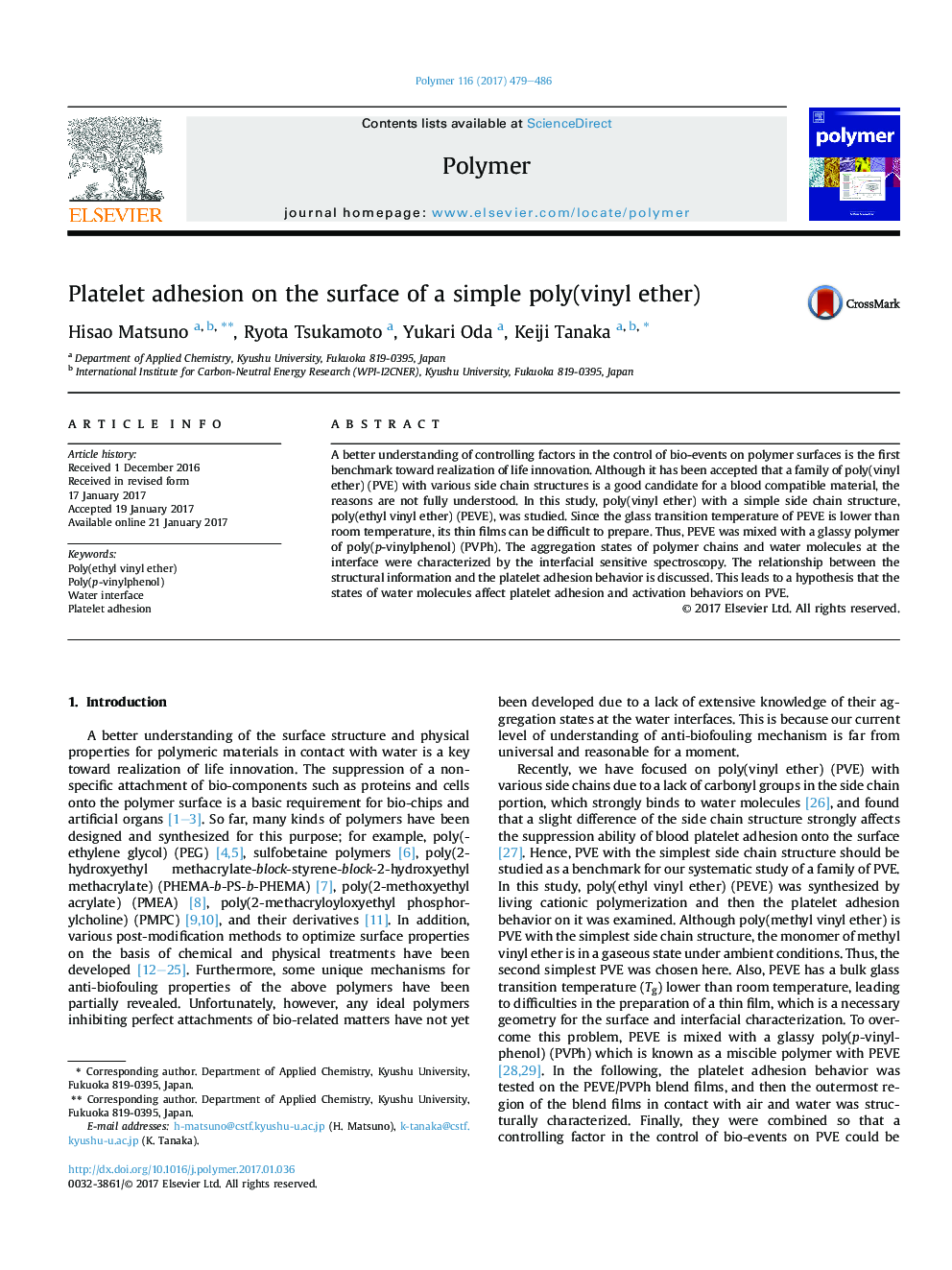| Article ID | Journal | Published Year | Pages | File Type |
|---|---|---|---|---|
| 5178162 | Polymer | 2017 | 8 Pages |
â¢PEVE blended in a PVPh film was segregated to the water interface.â¢Segregated PEVE suppressed platelet adhesion.â¢Disordered waters at the interface were keys to suppressing platelet adhesion.
A better understanding of controlling factors in the control of bio-events on polymer surfaces is the first benchmark toward realization of life innovation. Although it has been accepted that a family of poly(vinyl ether) (PVE) with various side chain structures is a good candidate for a blood compatible material, the reasons are not fully understood. In this study, poly(vinyl ether) with a simple side chain structure, poly(ethyl vinyl ether) (PEVE), was studied. Since the glass transition temperature of PEVE is lower than room temperature, its thin films can be difficult to prepare. Thus, PEVE was mixed with a glassy polymer of poly(p-vinylphenol) (PVPh). The aggregation states of polymer chains and water molecules at the interface were characterized by the interfacial sensitive spectroscopy. The relationship between the structural information and the platelet adhesion behavior is discussed. This leads to a hypothesis that the states of water molecules affect platelet adhesion and activation behaviors on PVE.
Graphical abstractDownload high-res image (244KB)Download full-size image
